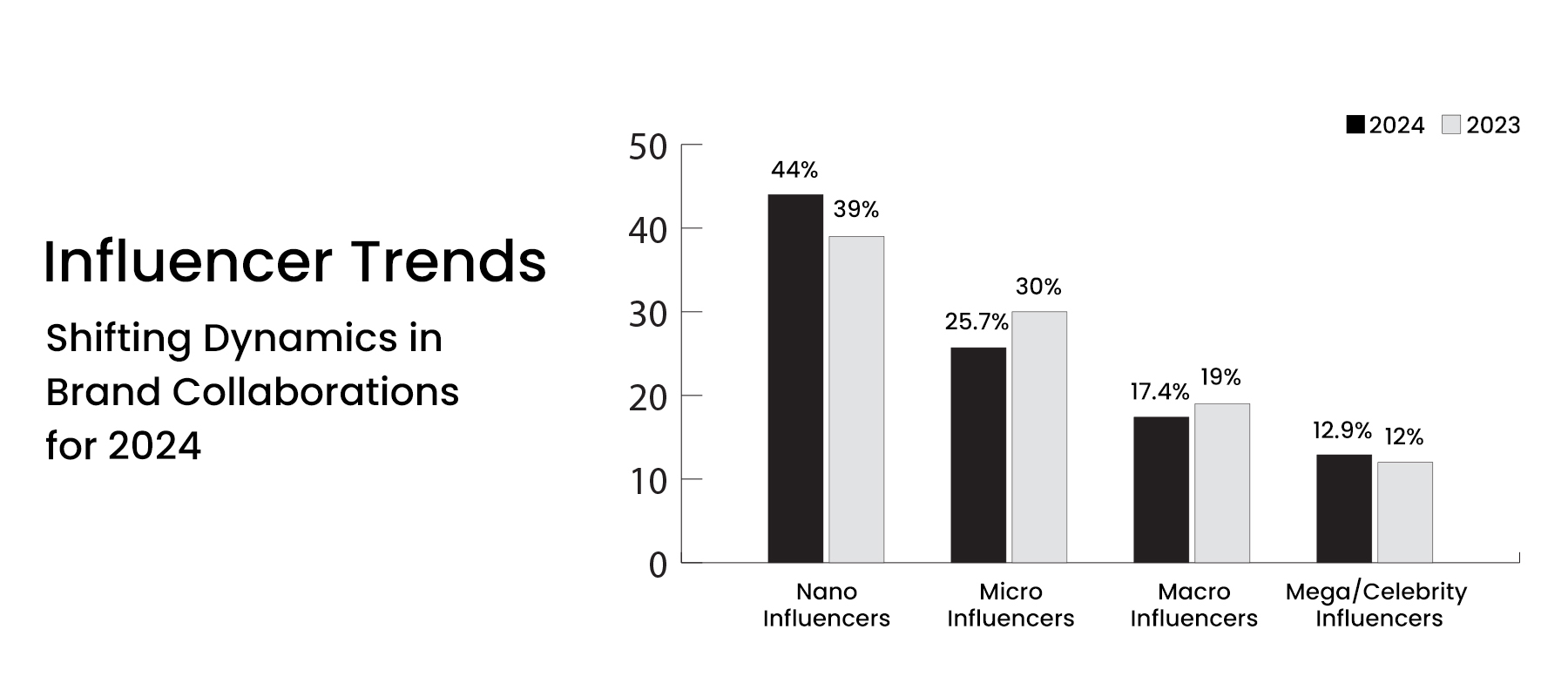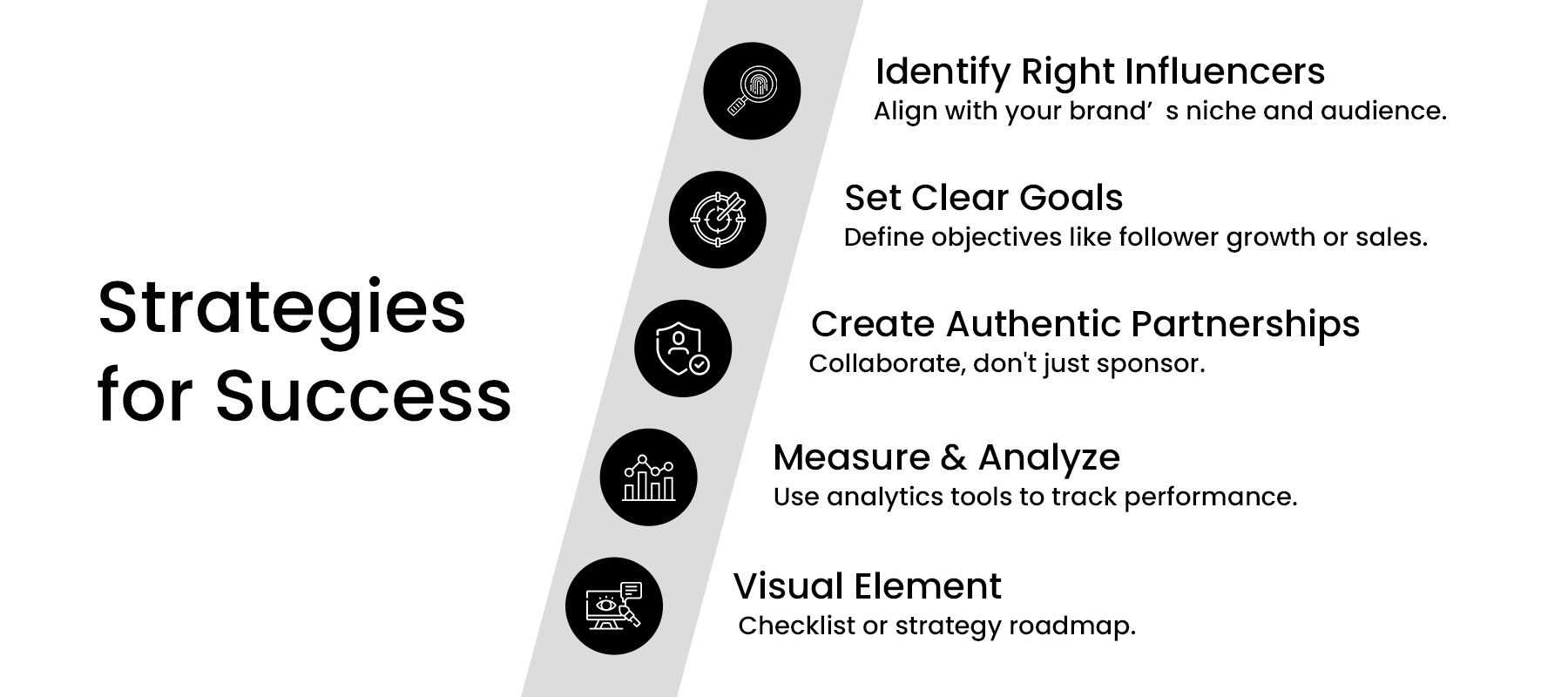Influencer marketing has emerged as one of the most effective strategies for brands looking to promote their products and services online in recent times. With social media evolving as the primary mode of communication and information sharing globally, influencer marketing taps into this widespread social network to leverage internet celebrities and key opinion leaders to reach target audiences engagingly and authentically. In this article, we will go deep into comprehending the massive impact that influencer marketing has on brand promotion and driving organic audiences online through key influencers on social media channels.
Definition of Influencer Marketing
Influencer marketing refers to an online marketing technique wherein brands promote their products or services through prominent social media influencers who have established strong credibility and relations with their high number of followers across various social media platforms. These influencers endorse brands through organic and sponsored social posts, stories, videos or written reviews that resonate with their followers, magnifying the word-of-mouth recommendations exponentially for targeted businesses.
Importance in Modern Digital Marketing
In today’s highly saturated digital marketing space, where consumers have extremely short attention spans, influencer marketing enables brands to cut through the online noise and promote their offerings in an impactful yet engaging manner. Partnerships with relevant social media influencers allow brands to showcase their products or services helping foster credibility and trust with potential customers.
Statistics show influencer endorsements see much higher engagement rates than ordinary brand posts, with over 90% of followers acting upon their recommendations. This organic growth through influencer exposure aids brands to gain a wider reach within their target segment, helping establish thought leadership as well as boost long-term sales.
You can Also Read this: 10 Effective SaaS Marketing Strategies to Drive Growth and Success
Understanding Influencer Marketing
Social media influencer marketing involves identifying and partnering with individuals having considerable followings across various social media platforms like Instagram, YouTube, Twitter etc and who are seen as experts, trendsetters or icons in their niche by their followers.

What is an Influencer?
An influencer is a third-party individual who has built a loyal following on social media because of their experience in a particular niche or industry. Through their engaging content on platforms like YouTube, Instagram, and Facebook, influencers have dedicated communities who trust their opinions and perspectives. Their recommendations hold substantial power in impacting the purchase decisions of their followers; hence, they are actively collaborated with by brands for the promotion of products and services.

Types of Influencers
- Mega Influencers: They have a massive following of over 100k on their social channels and have a nationwide reach and recognition. However, they can be costly to partner with due to their popularity. Examples include celebrities and prominent bloggers.
- Macro Influencers: They have a substantial follower base between 50k to 100k. They may not be as famous as mega influencers but they have similar engagement rates. They are able to influence heavy purchase decisions and also cost less than mega influencers.
- Micro-Influencers: They have between 10k and 50k followers, usually belonging to a specific geo-location or interest group. Their niche and loyal following make collaborations highly targeted and effective at affordable rates. Brands prefer them for local-level initiatives.
- Nano Influencers: They have under 10k followers usually belonging to very defined interest-based communities or geography. They have a closely-knit community and can deeply influence purchasing within their small tribes. Their engagement rates are highest but campaigns need to be highly focused.
How Influencer Marketing Works
- Brands identify social media influencers who are aligned with their target audience and message across different platforms like Instagram, YouTube, etc.
- They reach out to these influencers with collaboration deals involving promotional posts, product reviews, social endorsements etc in exchange for compensation.
- Influencers create sponsored content using branded products and promote it within their communities organically.
- Influencer’s recommendations and endorsements help brands gain exposure and trust amongst their loyal fanbase, improving the scope of conversions.
- Campaign performances are monitored through built-in analytics to optimize future influencer association and measure return on investment.
Benefits of Influencer Marketing for Brand Growth
Influencer marketing provides multiple advantages for brands looking to grow organically online. Some key benefits are:

Increased Brand Awareness and Reach
Partnering with relevant influencers allows brands to tap into their established communities, often numbering in thousands and millions of engaged followers. This amplified exposure presents the brand and messaging to an extensive new viable audience at one time, helping raise awareness cost-effectively compared to separate campaigns.
Enhanced Credibility and Trust
A big takeaway from influencer marketing is the surge in credibility and authentic endorsement it offers brands. Audiences trust influencers who genuinely believe in brands over sponsored advertisements. They find influencer reviews and recommendations more reliable than traditional advertising as they come across as impartial feedback.
Improved Engagement Rates
Statistics reveal user engagement with influencer posts exceeds engagement rates with regular brand posts by over 5 times on average. This is due to the personal connection, loyalty and credibility influencers share with their followers who rely on their advice. Higher engagement translates to improved brand receptivity, visibility, and overall recall value.
Access to Targeted Audiences
Partnering with influencers allows brands to gain access to their precisely targeted communities, which may not be reachable otherwise. The ability for brands to select influencers with followers matching their ideal customer persona makes campaigns highly optimized and aids the conversion of qualified traffic into leads and sales.
Cost-Effective Compared to Traditional Advertising
Although collaborating with mega influencers requires significant brand investments, overall influencer marketing costs only a fraction of traditional TV, print or even digital advertising. It delivers high engagement at fair costs and helps brands test different target segments on a budget before allocating larger spends.
Strategies for Effective Influencer Marketing

Identifying the Right Influencers for Your Brand
It is crucial to identify influencers with genuine followers who match the target audience’s demography and niche interests aligned with the brand position. Factors like authentic engagement, content style, and voice are assessed to select the best fits that are likely to produce actual results for the brand.
Setting Clear Goals and Objectives
Brands must establish measurable goals like follower increase, video views, and link clicks before campaigns. Objectives need to be defined in terms of the desired number of leads, signups or transactions expected to quantify ROI. Specific KPIs enable tracking the success of influencer associations.
Creating Authentic Partnerships
Brands must collaborate with influencers as partners not just sponsors to build rapport. A personalized approach to establishing mutual understanding boosts the quality of content created.
Developing Compelling Content Strategies
Attention-grabbing yet natural content following each influencer’s style keeps audiences engaged. Promoting exclusive offers through influencers enhances actionability for followers.
Measuring and Analyzing Campaign Performance
Advanced analytics tools facilitate tracking engagement metrics, conversions and qualitative sentiment to optimize collaborations. Regular reporting also aids in evaluating brand lift and ROI and its contribution to overall sales or leads.
– Check out our article on Effective Strategies for Social Media Marketing on a Budget
B2B vs B2C Influencer Marketing
Key Differences and Similarities
While B2C and B2B influencer marketing both involve leveraging social advocates, there are some distinct variances to consider due to their differing audience targets and purchase cycles.
- In B2C, influencers promote consumer goods and services to individuals, whereas B2B influencers spread messages relevant to business decision-makers.
- B2C typically has shorter sales cycles, while B2B requires establishing credibility and building long-term relationships.
However, both aim to develop authentic trust in a brand and drive measurable actions through relevant platforms and messengers.
Strategies Specific to B2B Influencer Marketing
Compared to image-centric B2C campaigns, B2B programs place a stronger emphasis on content over visuals. Micro-influencers with deep industry expertise are particularly effective at educating on technical product details through long-form articles, webinars, podcasts and trade publication interviews focusing on return on investment realities.
Case studies, whitepapers and research reports are commonly used assets to underscore value propositions. Hashtag campaigns spread strategic messages at industry events and conferences. Relationship nurturing through customized account interactions and networking opportunities personalizes the buyer’s journey.
Case Studies of Successful B2B Influencer Campaigns
SAP partnered with analyst influencers who published case studies highlighting large enterprise customers benefiting from its ERP software. This extended their brand reach among C-level professionals and vendors.
Shopify recruited fashion industry micro-influencers to create Instagram Lives, answering small business questions, driving traffic to its ecommerce website and free trial uptake.
Don’t miss our guide on 9 Effective Ways to Use Social Media for Ecommerce
Finding the Right Influencers for Your Brand
Using Social Media Platforms to Discover Influencers
A natural starting point for identifying potential influencer partners is exploring trending hashtags and accounts within relevant communities on Instagram, TikTok, YouTube and other creator-driven platforms. Brands can search by industry topics, products, and services to surface popular accounts by posting engaging content that aligns with their messaging needs. Following account interactions also indirectly exposes new influencer profiles.
Leveraging Influencer Marketing Platforms and Tools
Specialized third-party databases like Mavrck, IZEA and Klear provide streamlined search and filtering options for brands to discover influencers based on niche, engagements, follower counts and more. They also include influencer profiles, contact details, past partnerships and proposed rates. Tracking platform tools help analyze topic conversations in real time across channels.
Working with Influencer Marketing Agencies
Agencies maintain expansive internal influencer rosters that are constantly updated via first-party relationships nurtured over many campaigns. They employ dedicated scouts to source emerging voices within specified brand verticals.
Vetting Potential Influencers
Due diligence requires investigating an influencer’s posted content style and tone of voice, engagement and follower statistics patterns over time, keyword themes within their community, partner brands and campaigns in their portfolio, and online reputation through third-party reviews.
Don’t miss our guide on Elevate Your Brand with a Killer Content Marketing Strategy
Best Practices for Influencer Collaborations
Building Long-Term Relationships
Cultivating mutual trust between brands and influencers leads to the most impactful, authentic partnerships. Regular check-ins, providing feedback on content, and exploring recurring collaboration opportunities beyond single campaigns build meaningful connections. Genuine enthusiasm for an influencer’s work helps cement their allegiance as ambassadors.
Allowing Creative Freedom
Influencers thrive on self-expression – brands should avoid overly prescriptive briefs and empower them with flexibility. Respecting an influencer’s unique style and perspective engages their communities more genuinely. Co-creating campaign concepts collaboratively should produce fresh ideas while maintaining messaging alignment.
Ensuring FTC Compliance and Transparency
All sponsored posts necessitate clear labels per FTC guidelines. Hashtags like #ad or #sponsored avoid deceiving followers. Brands must approve all branded content before publishing. Compensation details should remain private to protect perceived authenticity on both sides.
Negotiating Fair Compensation
Influencers invest substantial time and effort into creating high-quality, original content. Brands should demonstrate respect through market-rate pay commensurate with an individual’s reach and influence. Compensation frameworks based on measurable engagement or conversion metrics performed fairly motivate peak performance.
Measuring the Success of Influencer Marketing Campaigns
Key Performance Indicators (KPIs) to Track
Brands should measure influencer campaigns across awareness, engagement and conversion metrics. Tracking followers/subscribers, post engagements, website traffic from linked posts/profiles, newsletter signups or video completion rates gauges awareness/engagement levels. Goals like coupon code uses, online/in-store sales, lead generations or app installs reveal bottom-line impact.
Tools for Measuring Influencer Marketing ROI
Platform analytics and third-party solutions like Aspire IQ, NapoleonCat, Amplified or Izea track campaign statistics holistically. They integrate with social platforms and CRM/marketing automation systems to attribute exposures to outcomes like revenue. Hashtags and linked URL tracking specifically measure influencer content performance. Tagging URLs with UTM codes enables ROI attribution across ad networks.
Analyzing Both Quantitative and Qualitative Results
While numbers objectively report measurable actions, contextual qualitative data offers crucial learnings. Reviewing influencer and follower sentiment feedback on branded posts via comments and messages helps optimize future partnerships. Surveying influencers privately on campaign effectiveness uncovers intangible impacts. Blending performance stats with subjective evaluations drives continuous enhancement.
Challenges in Influencer Marketing and How to Overcome Them
Fake Followers and Engagement
With the rise of fake accounts, brands must thoroughly vet influencers by checking for inflated follower counts, engagement spikes only around sponsored posts, or overly interacting with anonymous profiles. Analyzing engagement rates and follower growth patterns over months exposes inauthenticity. Partnering only with trusted sources curtails this risk.
Maintaining Brand Consistency Across Influencers
When leveraging a multitude of voices, brands face challenges in retaining a cohesive message and image. To resolve it clearly brief influencers on guidelines addressing tones, hashtags, and asset usage maintains identity. Providing customizable yet pre-approved campaign templates equipped with all copy, videos and images establishes conformity efficiently at scale.
Adapting to Changing Social Media Algorithms
As platforms evolve, newer strategies are required. Staying aware of algorithm updates and how they impact audiences helps pivot directions. Diversifying across networks and focusing on high engagement over the masses prepares for any fluctuations. The emphasis shifts towards privatized stories and reel content that is better optimized for new features, which uplifts performance.
The Future of Influencer Marketing
Emerging Trends (e.g., Virtual Influencers, Live Streaming)
New forms of digital avatars and live video are expanding possibilities. Brands partner with virtual influencers like Lil Miquela to reach gamers and Gen Z. Live Streaming gives followers spontaneity while shops enable try-ons and purchases within broadcasts. Micro-influencers thrive through communities built around live videos which are personalised experiences at an intimate scale.
Integration with Other Marketing Channels
Increasingly, influencer marketing forms one thread in an omnichannel story. Partnerships leverage other paid media, PR, and loyalty programs for well-rounded consumer journeys. Strategies fuse influencers, programmatic ads, and shoppable posts seamlessly across web, app and in-store touch points based on CRM tools.
Predictions for the Evolution of Influencer Marketing
Immersive technologies continue merging physical and digital realms influencing customers seamlessly online and offline. Convergence of social networks like Instagram and TikTok optimises finding new influencers based on interests instead of standalone platforms. Advances in artificial intelligence including deep learning algorithms automatically match influencers for hyper-relevant brand partnerships. It looks like you’ve shared the link to your guide: Choosing the Perfect Web Design Agency for Your Redesign.
Conclusion
Influencer marketing has proven tremendously effective for growing brands online when leveraged strategically. By authentically connecting with devoted communities through influential personalities, brands are able to boost consideration, stimulate conversations and spark real buying actions in a cost-efficient manner. As social platforms evolve bringing new audiences, the opportunity for influencer partnerships will continue to expand.
Find influencers for your brand by committing resources to establish smart influencer identification, outreach, campaign development and measurement processes will optimise impact. With innovative strategy and selection of right-fit influencer ambassadors, influencer marketing delivers resonant growth for modern brands.



